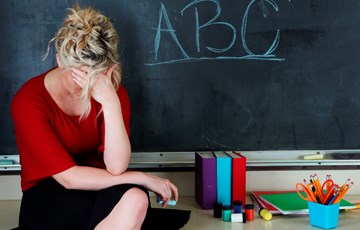This year, one of my professional goals is to infuse more outdoor learning into my teaching practice and incorporate learning through inquiry and play with exploration of nature and being in the outdoors.
I have to admit that this is one of my professional goals because it pushes me outside of my comfort zone. As a child and teen, I camped a lot, spent time at the cottage and lived outside from dawn until dusk. It is not being outside that deters me from outdoor learning. Truthfully, it is pure laziness. The amount of effort that goes in to preparing to learn outdoors and the unpredictability of weather conditions, temperature changes and children not being properly dressed to brave the elements are all factors that scared me away from doing outdoor learning in the past. However, I have always known that outdoor learning is important and special, so I put on my big girl pants and decided to jump in head first this year.
Firstly, I relayed my goal and my hopes for including outdoor learning in our flow of the day this year to my teaching colleagues and luckily, they were all on board. We came up with a system that we felt would work for both of our classes ( we follow a day on day off model) and went from there.
Then, I approached our parent council about collecting and purchasing supplies and resources that would make outdoor learning easier and more affordable for our whole kinder team.
Pals, the result was almost magical. Ok maybe not magical but definitely awesome. Our kids LOVE outdoor learning and are fully engaged for the 30-40 minutes per day that we do! They often tell us that it is their favourite part of the day!
So, if you’re like me and the thought of starting outdoor learning is pretty daunting, here are a couple tips and ideas that might make it easier.
1) Pick a time. Discuss with your teaching team to find a time in your schedule that works best. We do outdoor learning at the start of the day to minimize transitions. One less time to get on outdoor gear and zip-up 30 zippers!
2) Make a plan. What kind of learning will you do outside? We chose to rotate between outdoor learning centers that mirror our indoor centers and a more prescribed, whole class activity. For example, one day, the students will self-select and rotate through centers that we set up outside (more on this later), and the next day they will each be given a clipboard and an activity to do individually or in small groups.
3) Have a plan for weather/temperature changes. We have blankets to sit on, extra mittens for those who forget, boxes of Kleenex and bandaids in our outdoor learning wagons.
4) Stay consistent. Consistency is key to creating habits and young students thrive with routines. Even if the weather is crummy, try to do a shortened or altered outdoor learning session. Be flexible with your plans and adapt to weather. It’s raining? Have students search for worms and count them. Make tally marks in the sand to add a math component to this activity.
5) Communicate with parents. Let parents know that you will be doing outdoor learning, what this entails, and what their child needs to wear to be prepared.
6) Set up an outdoor learning wagon. Bring everything you need for outdoor learning out in a wagon. For some excellent outdoor learning wagon inspiration, check out Mme Mariah’s instagram or https://www.instagram.com/wow.wagons/.
Which brings me to 7) Get Inspired. Check online for cool ideas and see what other educators are doing. Check out the Take Me Outside Website and join their challenge.
Here’s a typical week of outdoor learning for my students:
Day 1: Centers:
Sensory Table: Water, fall leaves, spoons for making fall ‘soup’
Literacy: Making names with nature loose parts
Art: Leaf art
Discovery: Challenge: how many different types of leaves can you find?
Writing/ Art: Nature observation sheets
Reading: Blanket, stuffies and books
Building: wood slices and PVC piping
Day 2: Whole Class Activity
-Lesson on sorting
-Collect a variety of leaves
Day 3: Centers (same as above)
Day 4: Whole Class Acitivity:
-Nature-themed read aloud (focusing on colours in French)
-Search for natural items that match each colour.
Day 5: Centers (same as Day 1 & 3)
I hope this has inspired you to get outside and explore with your students! I promise you won’t regret it!
xo Jess







